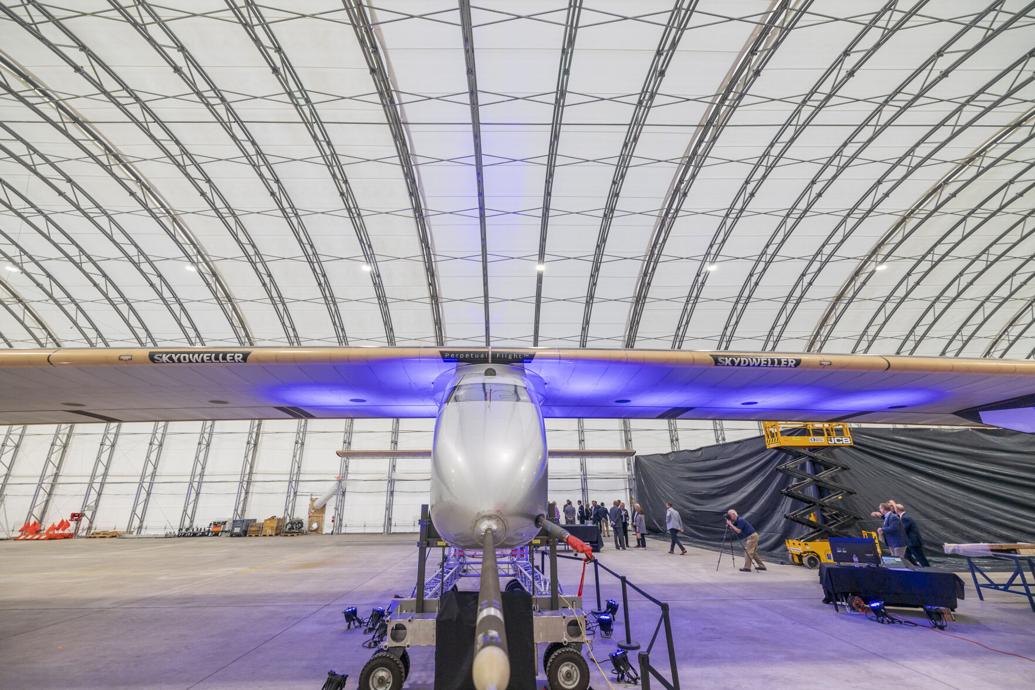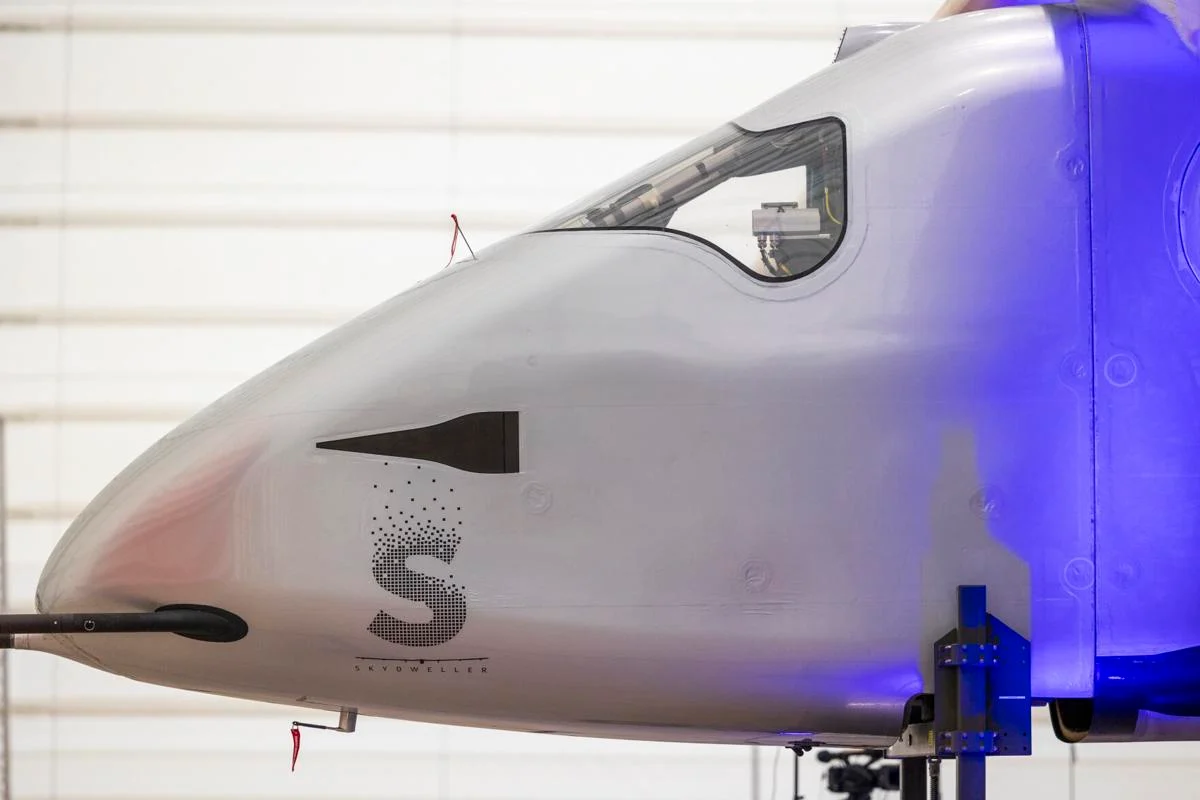Breaking
News
In 2019 it was bought by Skydweller Aero, a US-Spanish startup which aims to turn the plane into the world’s first commercially viable “pseudo-satellite,” capable of doing the work of an orbiting satellite, but with more flexibility and less environmental impact.
Working from a temporary hangar at Stennis International Airport, a scant 15-minute drive from the Louisiana-Mississippi line, Skydweller Aero Inc. has been testing an unmanned airplane with a wingspan that stretches three-quarters of a football field and, the company promises, will fly continuously for 90 days or longer using only the energy from the sun.
The plane — also called Skydweller, which resembles a giant glider and only weighs as much as a Ford F-150 pickup truck — will fly without a pilot or human crew at speeds of around 35 mph and altitudes up to 40,000 feet, company officials say.
The aircraft was unveiled during a media event Monday that drew a who’s who of Mississippi political officials, including Gov. Tate Reeves and both of the Magnolia State’s U.S. senators.
Skydweller Aero officials ultimately envision a fleet of solar-powered aircraft, flying long missions for surveillance, reconnaissance and numerous other applications.
The political officials on hand Monday said they envision the company becoming a draw for tech, expanding on the various companies already plying their trade on the sprawling campus of the nearby Stennis Space Center.
“It’s proving once again that innovation is happening at Stennis,” Reeves said. “Things are happening here that are not happening anywhere in the world.”

Headquartered in Oklahoma City, Skydweller Aero last year located at Stennis International, a facility whose runway is visible from the nearby Interstate 10 in Hancock County, promising an investment of $15 million in addition to at least 36 new jobs, the Mississippi Development Authority said last October.
In addition to the hangar it built, the privately held company brought $40 million in “advanced solar-powered aircraft inventory,” the agency said.
The company said a key factor in locating near the Mississippi coast was location. The Gulf of Mexico will be a prime testing ground.
CEO Robert Miller declined to go into test flight specifics, but did say “They’ve gone very well.”
Earlier, Miller told the assembled crowd, „It has game-changing capabilities.” Imagine, he said, a plane that can take off from the West Coast, fly to the South China Sea, and remain airborne for weeks after that.
Skydweller Aero is developing a new class of unmanned aircraft, building on existing technology used by the Solar Impulse 2, the solar-powered airplane behind the history-making first circumnavigation of the globe using only solar power.
Skydweller purchased that airplane in 2019 and began modifying it for unmanned flight. Aviation Week reported in February 2023 that Skydweller had made its first autonomous flight.

The plane was transported on a 747 to the hangar in Mississippi last year where it was reassembled for more extensive testing.
Travis Vetter, Skydweller’s chief engineer, said the top of the plane is equipped with 17,000 solar cells. Those cells spend the day collecting sunlight, then store that energy in batteries that power the plane.
The U.S. Navy has awarded the company a $5 million contract to demonstrate the uses of unmanned solar flight, such as patrols over large bodies of water. Miller said the hope is the contract will grow and more aircraft will be built.
“The numbers depend on the level of enthusiasm of the U.S. government,” he said after the unveiling, standing beneath the wing. “We think the level will be high.”